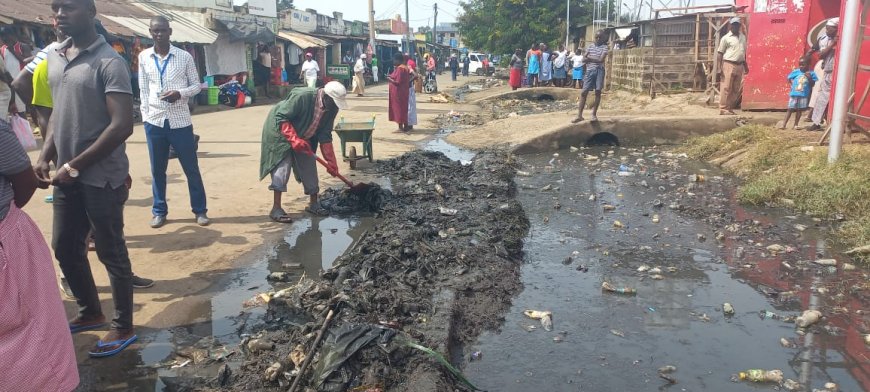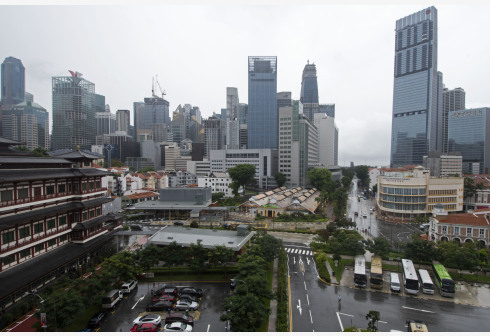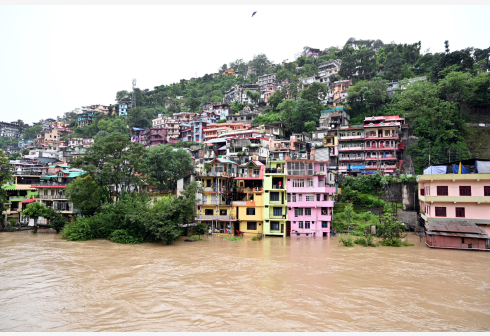Mega projects set to improve informal settlements in Kisumu

Kisumu,
Thursday, January 18, 2024
KNA by Joseph Ouma/Rolex Omondi
After several decades of living under deplorable conditions, informal settlements in Kisumu are set to reap big from a Sh1.4 billion mega project.
The huge project being implemented under the second phase of the Kenya Informal Settlements Improvements Project (KISIP 2) will create a major transformation of improved infrastructure; roads, water and street lighting.
Key areas earmarked for the upgrade include Manyatta, Nyawita, Obunga, Bandani, Nyalenda, Kibuye, Nyawita, Migosi, Kaloleni, Shaurimoyo and Muhoroni, which have persistently suffered insecurity, poor sanitation and inaccessibility challenges.
Kisumu Governor, Prof. Anyang Nyongo is set to launch the project Thursday, aimed at transforming the region's oldest slums into modern residential areas.
Stakeholders in the Lakeside city have praised the comprehensive plan as a major game changer that will develop five key areas namely, the Historical urban core, Kisumu Waterfront, CBD, the Informal settlement and the extended city boundaries.
Prof. Nyongo revealed that Kisumu has qualified for KISIP 2 following the successful implementation of KISIP 1 which was accomplished in 2020. The plans will serve as essential tools in guiding urban growth systematically and sustainably.
“The project will improve infrastructure in the slums through improved road networks, high-mast lights, water distribution pipes, consumer connections, lateral sewer line, trunk sewer, sewer inspection chambers, solid waste management and later issuance of title deeds”, the County boss said.
He added that under the Urban Development and Physical Planning the County completed the Kisumu City Physical and Land Use Development Plan.
In the first phase of KISIP 2, the World Bank has funded the construction of sewer lines, tarmacking of roads, toilets, ablution blocks and street lighting in Obunga, Migosi, Kibuye, Bandani and Kaloleni, with Chaju Builders awarded the tender.
Kisumu County Executive Committee Member for Physical Planning, Housing and Urban Development, Kennedy Hongo revealed that part of the KISIP 2 project is being funded by AfDB Bank at a cost of Sh200 million with Octagon firm awarded the Muhoroni section.
Hongo disclosed that the projects had been prioritized by the respective community members for the county government to implement.
“These projects will facilitate rural-urban migration in search of jobs, better lives, social amenities as well as entertainment centres which are often lacking in the informal settlements,” said Hongo.
He argued that the slums include where those who migrated from rural areas lived owing to the low cost of housing in the hope of improving their lives.
Apart from the roads and other projects, the county government is working with UN-Habitat and the European Union to roll out good and affordable housing programs in the slums.
The County government has also started zoning Kisumu into an Urban Core (Lake Front, CBD, Commercial, and River Auji), Urban Renewal and Regeneration (Slum Belt), Eastern Extension (Nyamasaria, Kibos), and Northern Extension (Kisian Otonglo, Kiboswa, Wathorego and Gita).
The planning process is important to help investors know what to expect, where and when to invest in the lakeside city.
Apart from the informal settlements, there is already an elaborate programme for the Riat area, where the inhabitants will have an industrial park of their choice alongside schools, shopping centres and other amenities.
However, the city management is discouraging further subdivision of land into smaller fragments in Riat by limiting the smallest parcel to a minimum of an acre per person so that they can have enough space for the houses and greening initiatives.
In the leafy suburbs of Milimani, property developers are already being stopped from constructing high-rise buildings, limiting the floors to three storeys with tenants and property owners required to green their frontages and fence them to ward off hawkers.
Courtesy; KNA
What's Your Reaction?



































































































































































































































































































